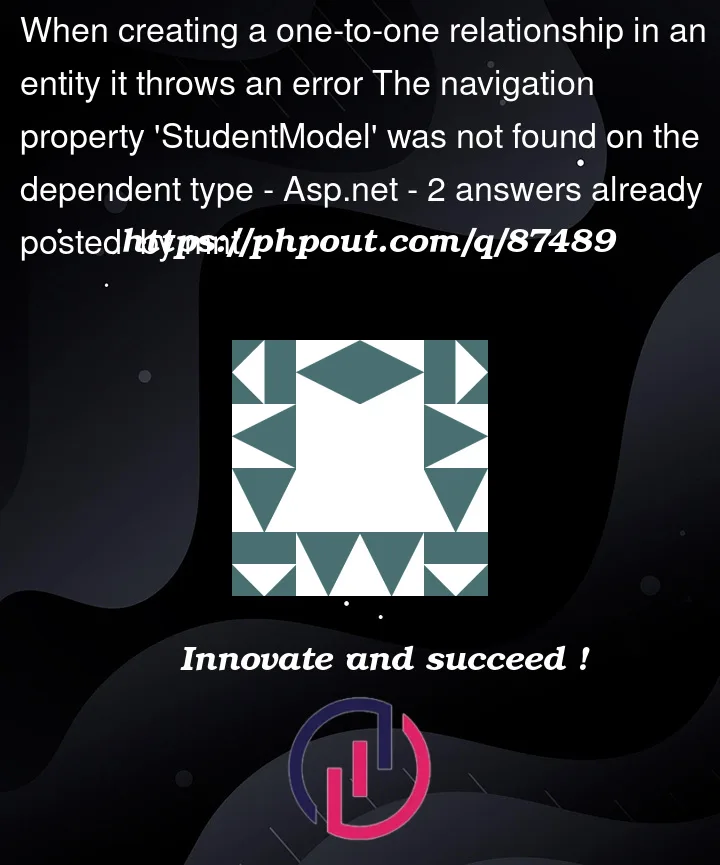I want to create one to one relation between tables. My table is
public class StudentModel
{
public int Id { get; set; }
[Required]
public string Name { get; set; }
[Required]
[DataType(DataType.Date)]
[DisplayFormat(DataFormatString = "{0:yyyy-MM-dd}", ApplyFormatInEditMode = true)]
public DateTime DateOfBirth { get; set; }
[Required, Display(Name="Department Name")]
public int DeptId { get; set; }
//navigration proprty
[ForeignKey("DeptId")]
public virtual DepartmentModels Department { get; set; }
public virtual StudentRegistrationModels StudentRegistration { get; set; }
}
and my other table is
public class StudentRegistrationModels
{
[Key]
public int StudentId { get; set; }
[Required]
public int CourseId { get; set; }
[Required]
public DateTime EnrollDate { get; set; }
public bool IsPaymentComplete { get; set; }
//navigration proprty
[ForeignKey("StudentId")]
public virtual StudentModel Student { get; set; }
[ForeignKey("CourseId")]
public virtual CourseModels Course { get; set; }
//oneToOneStudentRegistration
}
But when I make migration it throws an error:
Unable to determine the principal end of an association between the types ‘StudentManagementSystem.Models.StudentModel’ and ‘StudentManagementSystem.Models.StudentRegistrationModels’. The principal end of this association must be explicitly configured using either the relationship fluent API or data annotations.
Why is this occurring?




2
Answers
I believe the issue is that you have a single StudentRegistrationModel instance in your StudentModel, where the StudentRegistrationModel looks to be more of a Many-to-Many structure. Can a single student only be registered to a single course? If that were the case it would make more sense for StudentModel to just have a CourseModel reference. Since a Student probably has multiple courses, it would probably make more sense for StudentModel to have:
Then ensuring that your model configuration maps out the relationship. This can be done with an attribute, as part of the
DbContextOnModelCreating, or using anEntityTypeConfiguration. With Attributes:Maybe try to add
[Key]annotation toIdfield inStudentModel.or if it won’t work try map relationship in OnModelCreating in your data context.